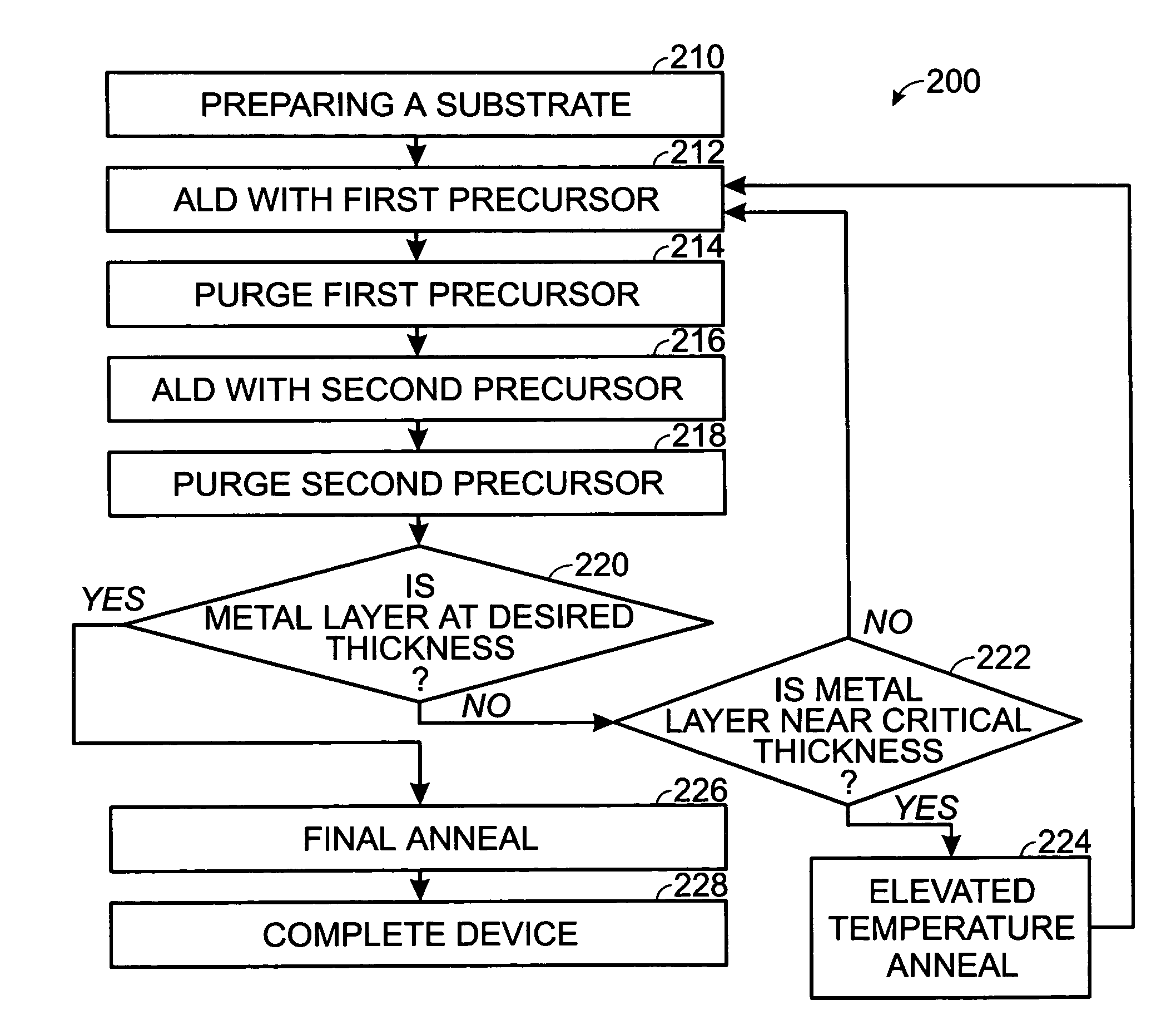Modulated temperature method of atomic layer deposition (ALD) of high dielectric constant films
a technology of atomic layer deposition and dielectric constant, which is applied in the direction of chemical vapor deposition coating, coating, coating process, etc., can solve the problems of high leakage of silicon dioxide films less than 1.5 nm, inability to use gate dielectrics in fet devices, and high power consumption, so as to achieve the effect of efficiently removing excess ligands and so great ligand buildup
- Summary
- Abstract
- Description
- Claims
- Application Information
AI Technical Summary
Benefits of technology
Problems solved by technology
Method used
Image
Examples
example
[0060]An example of demonstrated utility of the method of the invention follows: HfO2 films were deposited on H-terminated silicon using 10, 15, and 45 cycles of Hf(NO3)4 / HfCl4 / and periodic elevated temperature anneal, as described above. The resulting films were visually uniform. In this example, the films were annealed after every ALD cycle, e.g., N=1. Control films were also deposited in which the films were annealed only after the deposition was complete.
High Deposition Rate, Directly on H-terminated Silicon
[0061]Thickness was measured via spectroscopic ellipsometry. A plot of optical thickness at the center of the wafer vs. the number of deposition cycles is depicted in FIG. 8, and demonstrates that thickness is linearly dependent on the number of deposition cycles. Thickness variation was less than + / −5% over a 6″ wafer. The fact that the linear fit in the plot below does not intersect the x-axis confirms ease of deposition on H-terminated silicon. From the slope of the curve...
PUM
| Property | Measurement | Unit |
|---|---|---|
| thickness | aaaaa | aaaaa |
| temperature | aaaaa | aaaaa |
| temperature | aaaaa | aaaaa |
Abstract
Description
Claims
Application Information
 Login to View More
Login to View More - R&D
- Intellectual Property
- Life Sciences
- Materials
- Tech Scout
- Unparalleled Data Quality
- Higher Quality Content
- 60% Fewer Hallucinations
Browse by: Latest US Patents, China's latest patents, Technical Efficacy Thesaurus, Application Domain, Technology Topic, Popular Technical Reports.
© 2025 PatSnap. All rights reserved.Legal|Privacy policy|Modern Slavery Act Transparency Statement|Sitemap|About US| Contact US: help@patsnap.com



